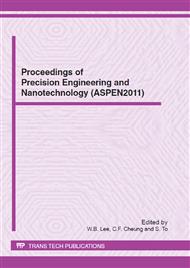p.522
p.527
p.533
p.539
p.545
p.551
p.557
p.563
p.569
Finite Element Analysis on a 250 kN.m-Type Rotary Drilling Rig for Foundation of Geological Construction
Abstract:
Rotary drilling rigs, general construction equipment, are widely used for deep drilling of ground for the foundations of public works. A new 250kN.m-type rotary drilling rig, most widely used in this field, is under development, and this study focuses on the operational safety of the mast subassembly on the basis of structure analysis of the mast subassembly using a finite element method with ANSYS. When using a drilling rig, an electric rotary drive supplies power for drilling. Here, the elevation of the rotary drive along the mast needs to be changed according to the geological construction environment. Through the analysis, the allowable torques at various elevations of the rotary drive are evaluated, also the safety of the drilling tool called the kelly bar subassembly is examined. Finally, the suitability of the mast subassembly design is examined from the analysis results.
Info:
Periodical:
Pages:
545-550
Citation:
Online since:
June 2012
Authors:
Price:
Сopyright:
© 2012 Trans Tech Publications Ltd. All Rights Reserved
Share:
Citation:


